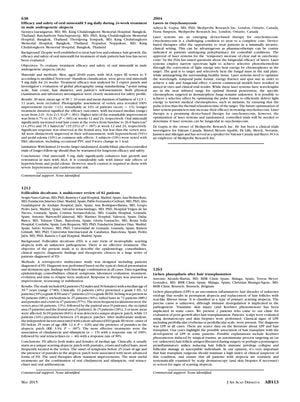TLDR Oral minoxidil improves hair growth in men with hair loss, but caution needed for those with heart issues.
The study evaluated the efficacy and safety of oral minoxidil in male androgenetic alopecia. 30 men were given oral minoxidil 5 mg daily for 24 weeks, and treatment efficacy was analyzed by expert panels, hair count, hair diameter, and patient self-assessment. The results showed that oral minoxidil significantly enhanced hair growth and restoration in men with AGA, with minor side effects of hypertrichosis and pedal edema. However, caution is required in those with severe hypertension and cardiovascular risk. The study suggests that larger randomized, double-blind, placebo-controlled trials of longer follow-up should be conducted for long-term efficacy and safety.
 1 citations
,
October 2022 in “PubMed”
1 citations
,
October 2022 in “PubMed” Patients generally have positive attitudes towards using topical Minoxidil for hair loss treatment.
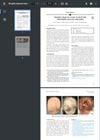 1 citations
,
August 2022 in “JAAD case reports”
1 citations
,
August 2022 in “JAAD case reports” Tofacitinib and oral minoxidil may help treat Sisaipho alopecia areata.
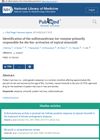 2 citations
,
August 2019 in “PubMed”
2 citations
,
August 2019 in “PubMed” A specific enzyme that activates the hair growth medication minoxidil when applied to the skin was identified.
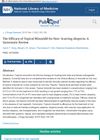 1 citations
,
February 2019 in “PubMed”
1 citations
,
February 2019 in “PubMed” Minoxidil is effective in treating various types of hair loss and can improve quality of life, with combination therapies showing increased effectiveness.
August 2014 in “Journal of drug discovery and therapeutics” Topical minoxidil and oral finasteride can help regrow hair in androgenetic alopecia.
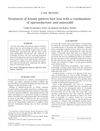 21 citations
,
January 2007 in “Australasian Journal of Dermatology”
21 citations
,
January 2007 in “Australasian Journal of Dermatology” Spironolactone and minoxidil together effectively treat female pattern hair loss.
April 1985 in “Plastic & Reconstructive Surgery” Topical minoxidil can help regrow hair in alopecia areata but is less effective for severe cases.
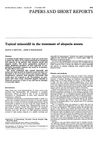 80 citations
,
October 1983 in “BMJ”
80 citations
,
October 1983 in “BMJ” Minoxidil helps hair regrowth in alopecia patients, with 16 having good results and no side effects.
